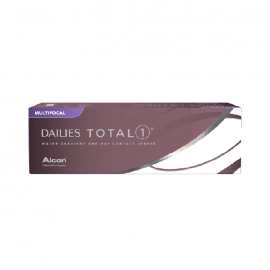Whilst multifocal lenses are not suitable for everyone, they do offer many advantages for those who wear them. If you are new to multifocal lenses, we will run through what multifocal lenses are, and if in fact they are what your eyes are needing.
What are multifocal lenses?
Who are multifocal lenses for?
As I mentioned, multifocal lenses are not
for everyone. For people who have corneal irregularities such as those who
suffer from severe dry eyes, have irregular astigmatism, glaucoma, and macular
degeneration are not suited for multifocal lenses. Typically, people with one
refractive error such as myopia or hyperopia (near or farsighted), would be
better with lenses specifically targeting one prescription. However, myopia in
children and teens can actually benefit from wearing multifocal lenses. The conditions
that make for perfect candidates include:
- Presbyopia
- Needing more than one prescriptive lens
- Regular astigmatism
- For work, study, or sport
- Myopia in children and teens
Multifocal lenses are most beneficial for
people who suffer from a condition called presbyopia which is more common in
people who are over the age of 40. Presbyopia occurs naturally as we age, due
to the loss of elasticity in our eye causing the lens to harden and become
unable to focus on objects close by. Presbyopia is a gradual condition and we
may begin to slowly notice changes in our near vision, such as finding it hard
to focus on nearby objects or finding them blurry. For existing myopia conditions, it is common to develop presbyopia and myopia
together, putting you in the prime category for multifocal lenses. Needing more
than one prescriptive lens for conditions such as presbyopia, myopia, hyperopia,
and regular astigmatism will benefit greatly by having all corrections in the
one lens. Multifocal toric lenses are also available for people with
astigmatism.
Another candidate who may benefit from a
pair of multifocal lenses are those who are constantly shifting their view from
near and far vision on a regular basis, such as for work, study, or sport. A constant
shift in near and far vision on eyes with deteriorating vision may benefit from
having one lens that will help them see clearly without having to alternate
between different lenses, or to suffer with blurry vision.
Studies have also shown firm evidence
that multifocal lenses do indeed help children and teens to prevent their
myopia from worsening. Compared with a single prescriptive lens, soft
multifocal lenses reported a higher reduction in myopia progression in children
aged between 6-19 years old. Slower progression was reported in children who
wear multifocal lenses for a minimum of 8 hours per day, with 10-12 hours per
day being the most beneficial.
Weighing up the positives and negatives
Like with all things, there are pros and
cons to consider if multifocal lenses are right for you.
The Positives
- They feel natural switching between different prescriptions compared to bifocal lenses
- Offering enhanced vision at all varying distances near, middle, and far
- They come in both soft and hard (rigid gas permeable) lens options to suit your requirements
- Soft lenses are made from soft hydrogel material for increased comfort and breathability
- Increased water content to keep eyes moist and comfortable
- Convenient all in one lens instead of alternating between different contacts and glasses
- Can be used to help prevent myopia worsening in children and teens
- Inconspicuous lens compared to bifocal lenses
The Negatives
- Eyes may take time to adjust to the multiple zones at different distances in your lenses
- Reduced night vision due to glare and a halo-like effect surrounding night-time lights may cause a distraction when driving
- A more expensive option compared to regular contact lenses due to containing multiple lenses
- Decreased contrast and clarity in low-light conditions
- 3D vision or shadows whilst your eyes adjust
How to care for multifocal lenses
Just like your regular lenses, multifocal
contacts are to be cared for the same way. Always ensure you handle your lenses
with clean and dry hands, and give them a proper clean with solution before and
after use. Store your lenses in a closed case of solution, be sure to keep them
away from water, and always remove before bed. Depending on your multifocal
lens, they may come in daily or monthly wear and are to be adhered by their
timeline. Never wear your contacts for longer than stated.
How to adjust to wearing your multifocal contacts
Wearing multifocal lenses are an
adjustment, and it does take time for your eyes and brain to catch onto the varied
prescriptions of the lenses. However, with patience, perseverance, and the
right techniques to adjust, you should become acclimatised to your multifocal
contacts in a couple of weeks. Here are some adjusting techniques that you can
follow:
- When first obtaining your lenses, it is
important to take it slow by wearing them for short periods at a time, and
slowly increase the duration of wear each day.
- Get to know your multifocal lenses at
home in a controlled and comfortable setting before attempting them outdoors.
- Avoid switching between your multifocal
lenses and glasses as this doesn’t give your eyes the chance to adapt to the
new lens.
- Consistently wear your lenses every day
to help your brain adapt to the visual change.
- Try eye exercises to strengthen your eye
muscles and improve visual precision. Speak to your optometrist on specific
exercises you can do.
- Wear your multifocal contacts in
well-lit environments to avoid possible eye strain and to improve visibility.
- Practice focusing your gaze directly on different
objects and keep your head at a consistent position whilst moving your eyes up
and down through the lens. This can help you to find what zone in your lens has
the sharpest vision for the distance you are looking at.
- If reading, hold your book at different
angles and distances from your eyes to find the position that is the sharpest.
- You will find objects that are near,
middle, and distant will require you to look through different parts of your
lens. This will take time to adjust, but once you work out the sweet spot, your
eyes will naturally gravitate to where they need to be.
- Approach activities such as walking down
stairs or driving your car/ riding a bike with care, as it takes some time to
familiarise yourself with the change in perception.
The above information is just a guide in
how to comfortably adjust to your multifocal lenses. If you are having great
difficulty with your lenses, or the adjustment period has extended beyond three
weeks, make an appointment with your eye doctor to discuss your concerns. It
could be your prescription is not right for your eyes, or your lenses are not
fitting correctly. Once your eyes adjust to multifocal contacts, you should
find they feel part of your natural vision. For those who think they might like
to give multifocal lenses a try, have a chat with your optometrist before you
proceed.
Check out our range of multifocal lenses
on our site by clicking on the products below.





Leave your comment
Note: HTML is not translated!